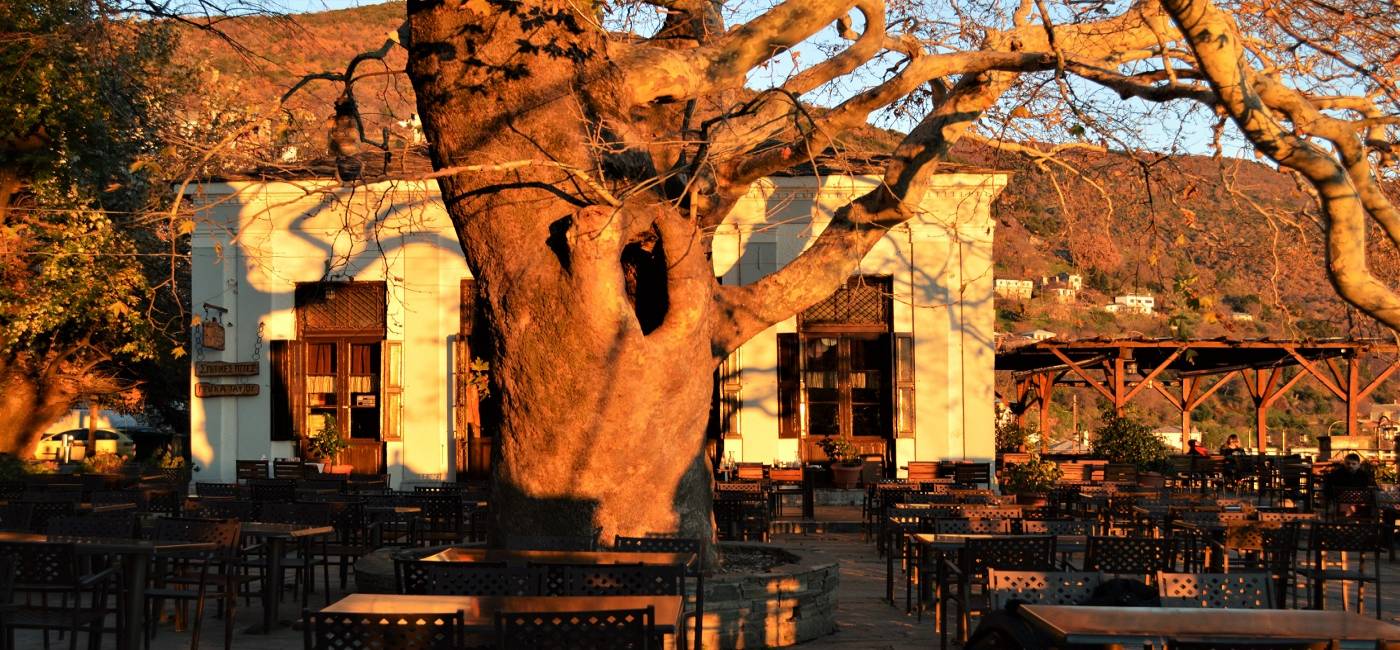Makrinitsa
Like most of the other Pelion villages, Makrinitsa developed around a monastery. It was the imposing Monastery of the Virgin Mary the Makrinitissa from which only a few parts survive today at the northeast part of the village.
At the village square, also known as the balcony of Pelion, the stone-built Church of Saint John the Baptist (1806) is a true gem, decorated with marble reliefs with apotropaic symbols, floral and Christian motifs by the artist Theodosios from Agrafa. The imposing nearby fountain used to be the meeting place for the women of the village. In total, 50 fountains can be found scattered in this small village most of which date to the 18th century.
Behind the church of Saint John, a small kafeneion preserves a rare wall painting by the famous Greek folk artist Theofilos. The painter’s favorite hero Katsantonis is depicted along with his comrades feasting, dancing and playing music while at the same time being ready for war. This is the time of the Greek War of Independence, when Pelion was occupied by the Ottoman Turks.
Makrinitsa, however, is more than its main square. The sunset behind the hills of the Volos harbor, the sound of running spring waters everywhere in the village, the shade of the centuries old plane trees and the smell of burning wood will awaken your senses.
Leave the square and walk on the kalderimia (the cobble stone streets) that take you to the less touristy parts of the village. Can you find the 50 fountains? Can you smell the Greek lunch being cooked behind the open windows? If you like hiking, step carefully on the pasoumaki, the vertically placed slabs that defined each step in the kalderimi, and walk all the way up to the top of the village at an altitude of 850 meters, or go down to the bottom at 300 meters. Where else will you find a village with an elevation difference of 550 meters?



